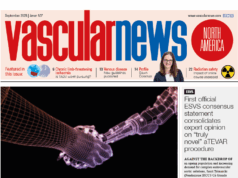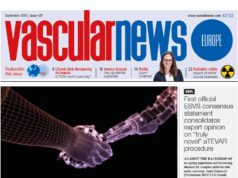
Why do rural adults and racial and ethnic minorities with vascular disease get major leg amputations more often? A new study published today in Epidemiology uses artificial intelligence (AI) to solve the mystery, finding an unaccounted-for factor that researchers think points to implicit bias in the clinical decision-making process.
“The AI model allowed us to distinguish among the many reasons behind these much higher rates of amputation among certain groups of people with vascular disease,” said lead author Paula Strassle (University of Maryland, College Park, USA) in a press release announcing publication of the study. “We found that, after accounting for everything else, people’s unconscious biases are likely behind why some groups receive amputation instead of alternative treatment that preserves their limb.”
“We hope our results will be a catalyst to create evidence-based guidelines that help vascular surgeons and other providers who make this life-changing decision do so objectively.”
After accounting for known differences in clinical presentation, the study found higher rates of amputation among Black, Hispanic, Native American, and white people in rural areas as well as among Black and Native American people in urban areas. After further accounting for differences in hospital and neighborhood resources, higher amputation rates persisted among Black, Hispanic, and Native American people in rural areas, and Black and Native American people in urban areas.
“We found a substantial unexplained portion that would suggest an implicit bias in clinical decision-making occurring at the physician and hospital level,” Strassle said.
The study examined hospitalisations between 2017 and 2019 of people under 40 with peripheral arterial disease (PAD) or chronic limb-threatening ischaemia (CLTI), across five states (Florida, Georgia, Maryland, Mississippi and New York) using State Inpatient Databases from the Healthcare Cost and Utilization Project.
Researchers programmed an AI model to consider more than 70 variables that contribute to known reasons for differences in leg amputations of people with PAD. Variables included clinical factors such as age and other health conditions, healthcare system capacity to perform revascularisation and limb amputations, legal and regulatory climate, and the physical environment such as a person’s distance to the nearest emergency room and ZIP code median income.
“This AI model will allow us to easily assess intersectionality across race, sex, income and rurality, and offers us the ability to indirectly study hard-to-measure causes of disparities, like implicit bias and stereotyping,” said Strassle.
Limb-threatening conditions are often the result of decades of difficult-to-control diseases like diabetes, high cholesterol and nicotine dependence. For surgeons, who know these conditions lead to worse surgical outcomes, this can make the decision to pursue a complex limb-saving surgery even trickier.
“As vascular surgeons we have surgical guidelines, but we don’t have detailed guidelines to help us make the decision between amputating someone’s leg and limb-saving surgery in patients who are not medically ready. Given the number and complexity of variables involved, we need more information describing the optimal treatment for each person in different conditions. We need to know we can perform a successful vascular operation, and also not increase the risk of dying,” said Katharine McGinigle (University of North Carolina, Chapel Hill, USA), senior author of the paper.
“There are so many medical, surgical, and social factors that contribute to disease progression, limb-loss and even death. Surgeons and others making treatment recommendations deserve evidence-based guidance that will help us avoid unconscious biases and make the right decision at the right time for each person based on their unique clinical and social needs. AI methods, similar to the one used in this research, can help us achieve that goal,” said McGinigle.
Strassle and McGinigle hope that their findings will inform comprehensive guidelines and health policies that help clinicians avoid unconscious bias and other unjustified differences in the quality of care provided, to safely save limbs of people living with advanced vascular disease.













